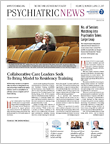Higher emotional stress as measured by resting metabolic activity of the amygdala is associated with greater risk of subsequent cardiovascular disease events, according to a study published online January 11 in The Lancet. The findings “provide novel insights into the mechanism through which emotional stressors can lead to cardiovascular disease,” wrote researchers led by Ahmed Tawakol, M.D., an associate professor of medicine at Massachusetts General Hospital and Harvard Medical School.
Tawakol and colleagues hypothesized that activity in the amygdala in response to stress increases arterial inflammation both directly and by way of activity in bone marrow.
“What is novel here is the bridging of multiple areas of research,” said Peter Gianaros, Ph.D., a professor of psychology and psychiatry and director of the Behavioral Neurophysiology Lab at the University of Pittsburgh. Gianaros has also studied the relationship between the amygdala and cardiovascular disease but was not involved with Tawakol’s study.
“It builds on threads of prior research that pointed in this direction and makes strong connections with research on the neurobiology of stress as well as with clinical cardiology,” said Gianaros. “Now we have the proof of concept and a vision of the future.”
The amygdala is known to be a key component of the brain’s stress network. Past studies in mice suggested that amygdala activity in response to stress accelerates cytokine production and atherosclerosis, but whether the same was true of humans was unknown.
Tawakol and colleagues examined data originally derived from cancer screening imaging studies of 293 patients. Using positron emission tomography/computed tomography (PET/CT) scans, they analyzed activity in the amygdala and in bone marrow, as well as arterial inflammation.
During the median follow-up of 3.7 years, 22 patients experienced a cardiovascular disease event—including heart attacks, strokes, angina, or other events. Each increase of one standard deviation in resting amygdala activity predicted a 1.6 risk of a cardiovascular event. The results were significant even after adjusting for established cardiovascular risk factors.
Greater amygdala activity was also associated with increased bone marrow activity, which the authors said led to increased arterial inflammation followed by cardiovascular disease events.
“[T]he brain’s salience network, bone marrow, and arterial inflammation together form an axis that could accelerate the development of cardiovascular disease,” concluded Tawakol and colleagues. “Furthermore, our findings raise the possibility that efforts to attenuate psychosocial stress could produce benefits that extend beyond an improved sense of psychological well-being and could beneficially impact the atherosclerotic milieu.”
Clinicians might eventually screen for and treat chronic stress just as they do for other cardiovascular risk factors, they suggested.
Realistically, clinical applications are still well down the road, and much needs to be done to move the field forward, said Gianaros.
“We’ll need to set norms and thresholds for amygdala activity and see cost reductions in the methods used to assess it,” he said.
For instance, it would be helpful to know more about what factors contribute to elevated amygdala activity, how people vary in their appraisal of stressors, and whether the amygdala sensitizes individuals to stressors in the environment or if the increased activity is a result of repeated stressors, he said.
“This rigorous study is a good example of how multidisciplinary work can lead to potential breakthroughs or make connections that don’t happen when working in silos,” said Gianaros. ■
An abstract of “Relation between resting amygdalar activity and cardiovascular events: a longitudinal and cohort study” can be accessed
here.
